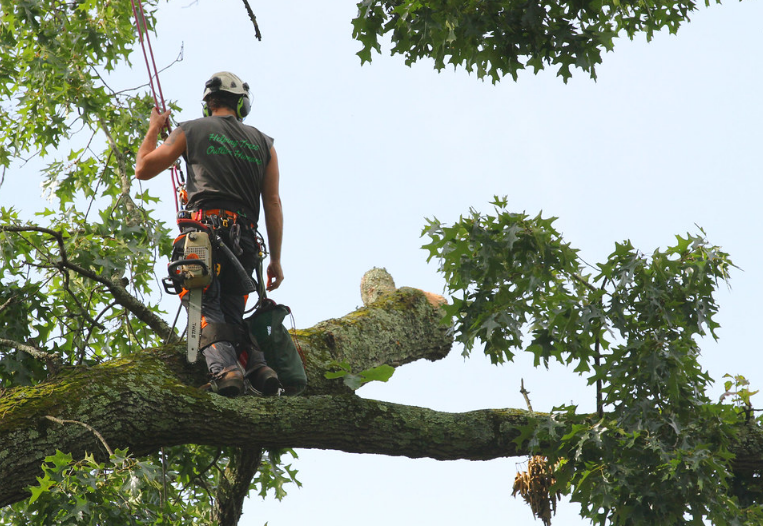 If you want to maintain the health of your trees, hiring a tree service company is a great idea. Professionals know how to prune trees for various reasons, including longevity, overall weight, and the risk of falling trees. They can also help you prevent problems with pests and diseases. Most tree service companies also offer cleaning services, so no tree trunk or branch will remain in your yard after the job is completed. An example would be tree service east Lyme CT.
If you want to maintain the health of your trees, hiring a tree service company is a great idea. Professionals know how to prune trees for various reasons, including longevity, overall weight, and the risk of falling trees. They can also help you prevent problems with pests and diseases. Most tree service companies also offer cleaning services, so no tree trunk or branch will remain in your yard after the job is completed. An example would be tree service east Lyme CT.
Pruning prolongs the life of a tree
While trees are beautiful, they need periodic attention to stay healthy and aesthetically pleasing. If neglected, they can become hazards to human and property safety. Some types of trees require annual inspections and pruning. Pruning young trees can increase a tree’s lifespan by removing weak, dead, and diseased limbs. Pruning also reduces the risk of limb failure. Proper pruning also improves the overall appearance of a tree, making it a beautiful feature of your yard.
However, there are several dangers associated with pruning. The pruning creates wounds on the tree, and the removal of significant living tissue reduces the tree’s overall energy-producing tissue. Open wounds can also allow disease organisms to invade the woody tissue. Large wounds also encourage dense regrowth, creating nesting sites for birds and other wildlife. Therefore, pruning is not always a good idea.
Pruning reduces the overall weight of a tree.
Proper pruning will increase your tree’s overall health and beauty and fix some of its problems. For example, it is essential to plant the correct type of tree in the right place. If you fail to do this, you may risk causing future problems to the tree. Proper pruning will also reduce the overall weight of a tree. Pruning should be done only by a certified arborist, whose training and experience will ensure your tree’s health.
Thinning and raising branches are two of the most common types of pruning. These methods effectively improve the structure and prevent limb failure near facilities. Thinning also opens the foliage of a tree and reduces the weight of the larger limbs. They will also keep the natural shape of the tree. Another method is called reduction, which involves cutting off lower branches from a tree so that it can grow upwards. In this way, it will reduce the overall weight of the tree without affecting its health or structural strength.
Pruning reduces the risk of a tree falling into power lines.
Traditionally, utility lines have been protected from falling branches by topping, shearing, and hedging techniques. Toppers cut a tree crown back to a certain distance below the wires. A tree is healthy when its peak is pruned correctly, leaving many stubs. These stubs will eventually sprout new branches. Typically, the old branch below the stub cut will rot.
When using pole pruners, avoid pruning trees near power lines. Many people are unaware of the secondary power lines that run through the tree canopy. When a tree reaches close to power lines, the branches can touch them accidentally. This can lead to a dangerous electric shock if the tree falls. Keep it at least 10 feet away from power lines if you are on a ladder. Do not touch power lines with your ladder.
When it comes to maintaining power lines, pruning is essential. However, trees that grow too high in height may cause utility companies to perform dangerous pruning operations. As a result, many power companies have ceased allowing trees to grow over their lines. As a result, they may have to make drastic pruning cuts to clear the lines. In these cases, tree removal costs increase as the tree grows unhealthy. This cycle continues until the tree dies.
Preventing trees from growing into powerlines
In many cases, trees and power lines conflict, causing power outages and increasing line clearing costs. Trees pruned during line cleaning can also decrease tree health and a greater risk of falling. In recent years, new techniques have been developed to prevent trees from growing into powerlines that reduce line clearing costs and make trees look different from those pruned in the past. Learn more about how to prevent trees from growing into powerlines and what you should do instead.
To avoid planting near powerlines, keep the distance between the trunk of a tree and a power line at least 50 feet. In addition, the Arbor Day Foundation recommends following the “Right Tree, Right Place” approach when selecting new trees. Using the proper species for the area and planting methods will minimize power outages and promote healthy, beautiful trees. A good rule of thumb is to plant trees that do not grow to more than 25 feet.






